The Fall and Winter Quarter for Triton UAS had many notable pieces of development for our teams in the face of setbacks caused by the COVID-19 Pandemic. Here is an update on what we’ve been working on and what our teams will be up to in the coming Spring Quarter.
Airframe Team
The airframe team has made developments into the aircraft design optimization program, creating an initial architecture for the aircraft design optimization code and initial architecture for a module that optimizes the tail boom length, horizontal, and vertical stabilizer areas as well as successfully implementing it into the overall optimization program. Further development of the optimization program includes an implementation of a finite derivative based iteration for the wing area and a method that uses the min drag equation to solve for velocity and wing area. The team also wrote a series of functions utilizing MATLAB to perform composite structural analysis according to the classical laminate plate theory, as well as utilizing composite layup ply orientation optimization. SolidWorks was used to create a CAD model of a potential plane design to run a simulation on with Ansys Fluent in order to benchmark the output of the aircraft design optimization program, and further research was done on how to model the loading on a sandwich structure spar.
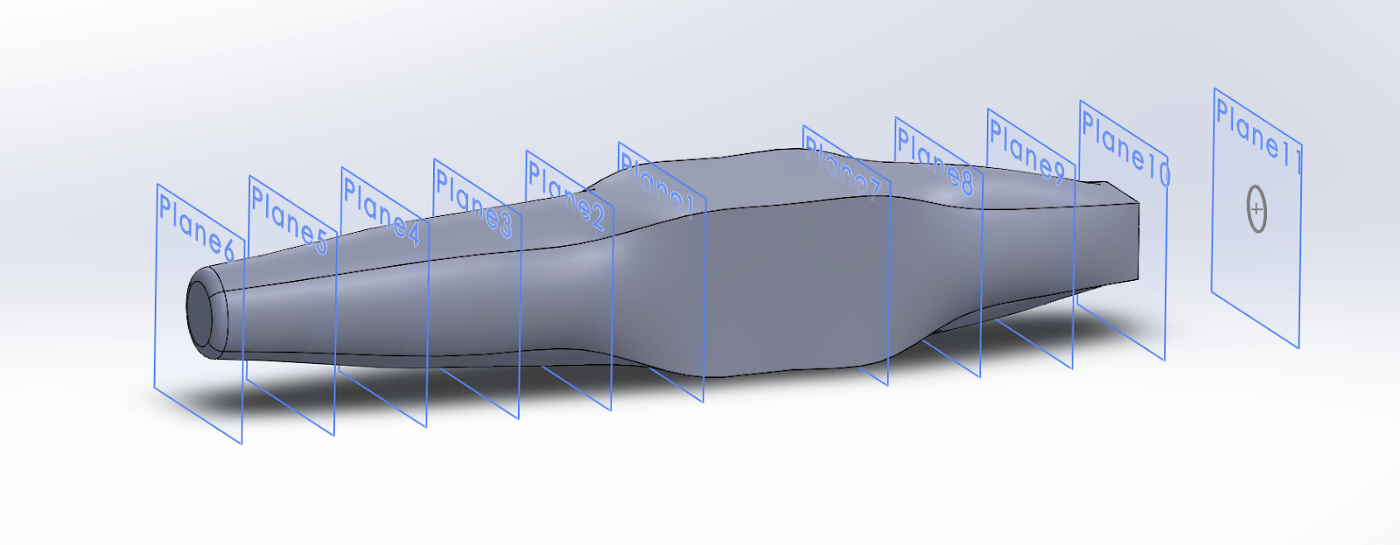
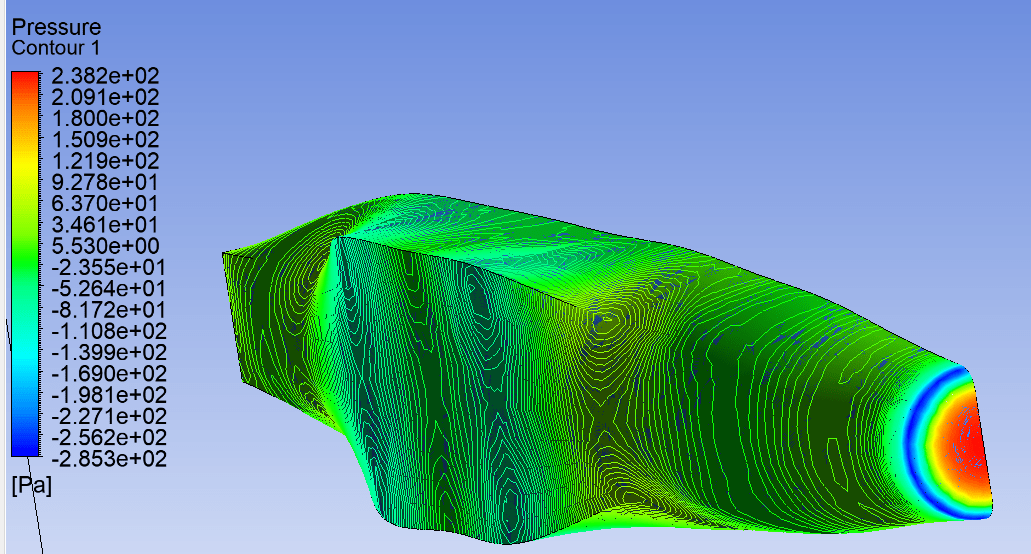
Additional plane designs include improvements to a fuselage design and modifications of a CAD model and analysis through Ansys Fluent. The team also performed more research and analysis of common families of airfoils to determine the best family of airfoils that suit our use. This was done by creating a process to systematically choose an airfoil based on the output of the optimization code Ci/Cd in MATLAB.
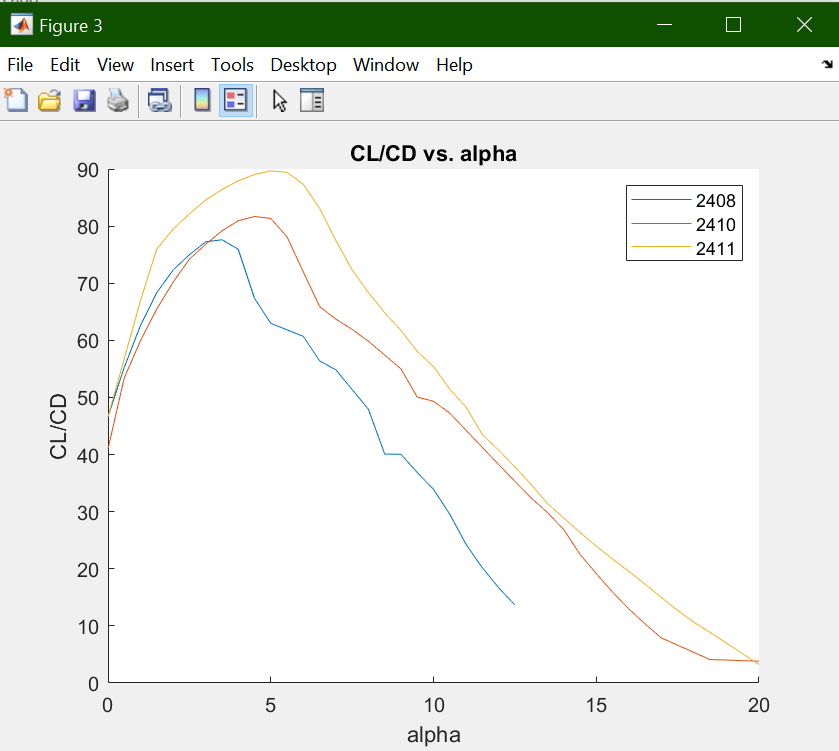
The airframe team was also responsible for developments on the UGV design, with decisions on how the chassis will be manufactured, how the fuselage door and dropping mechanism will function, and the driving mechanism systems diagram and payload mounting locations. Improvements to the UGV design include an updated dropping mechanism of the UGV on the plate to handle greater loads and a prototype model for the fuselage door mechanism to finalize its design. The team also worked together with the Embedded Team to design and finalize a controller for an autonomous parachute that would efficiently guide the UGV to the target location.
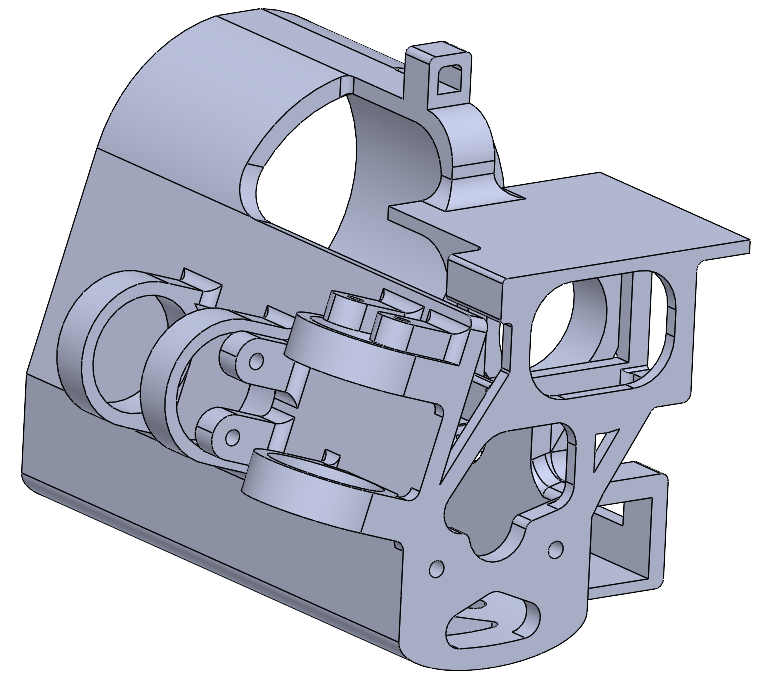
Looking towards the Spring Quarter, the Airframe Team intends to continue improving the aircraft design optimization program. Improvements and additions to the program include adding weight consideration and static stability constraints in the tail module program, adding considerations for wing sweep, non-trapezoidal wings, and dihedral wings to make the code more precise, expanding the composite layup optimization to optimize the number of plys, and finish creating aircraft design optimization code and benchmark code with known results. UGV improvements will continue to be made, with finalization on tuning the PID values for the driving controller, performing initial test drives with the UGV, and completing the design controller for the UGV landing mechanism. Other goals for Spring Quarter center around the design of our new flight platform, Carbon Copy. The team plans to create a detailed aerodynamic design of the Carbon Copy, as well as determine the necessary materials for its construction. Spar sizing modifications, finalization of the fuselage design, and choosing the right airfoil are expected to be accomplished in the next quarter.
Embedded Team
The Embedded Team started the season with efforts to overhaul the power board surface mount devices (SMD) that would help facilitate mass production of PCBs needed in the future. The team has completed calculations for configurations of the chips that are planned to be used and have finalized the new power board design, completing the component selection stage and build of materials optimization. This was supplemented by using an alternative voltage step down method for a peripheral device in which a simple buck converter did not suffice.
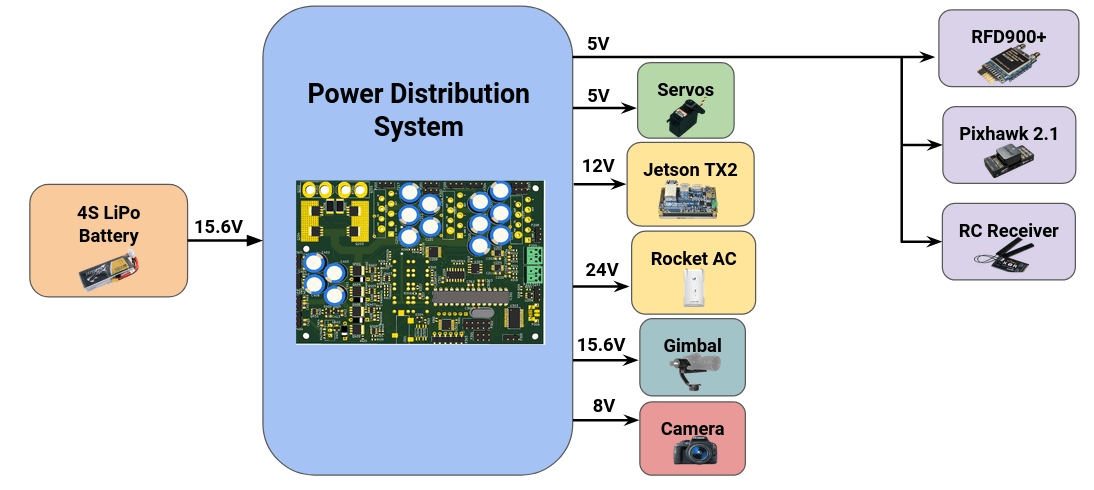
The team also checked the performance of a communication protocol for signal boards based on our use case, with its research and analysis producing positive results in the reception of sent packets. This led to the completion of the Arduino and C program to read in amplified thermocouple readings, redirecting to the pixhawk in terms of mavlink packages, and interpreting the data. The team will continue to research ways to integrate the programs together. With these efficient results, the team is currently working on integrating the sensors to the microcontroller.

Additional progress made by the Embedded Team this season includes the development of a drag plug for the UGV simulation in Gazebo, finalization of specification requirements of the signals board, and finalizing the basic implementation of the antenna tracker and simulation software suite.
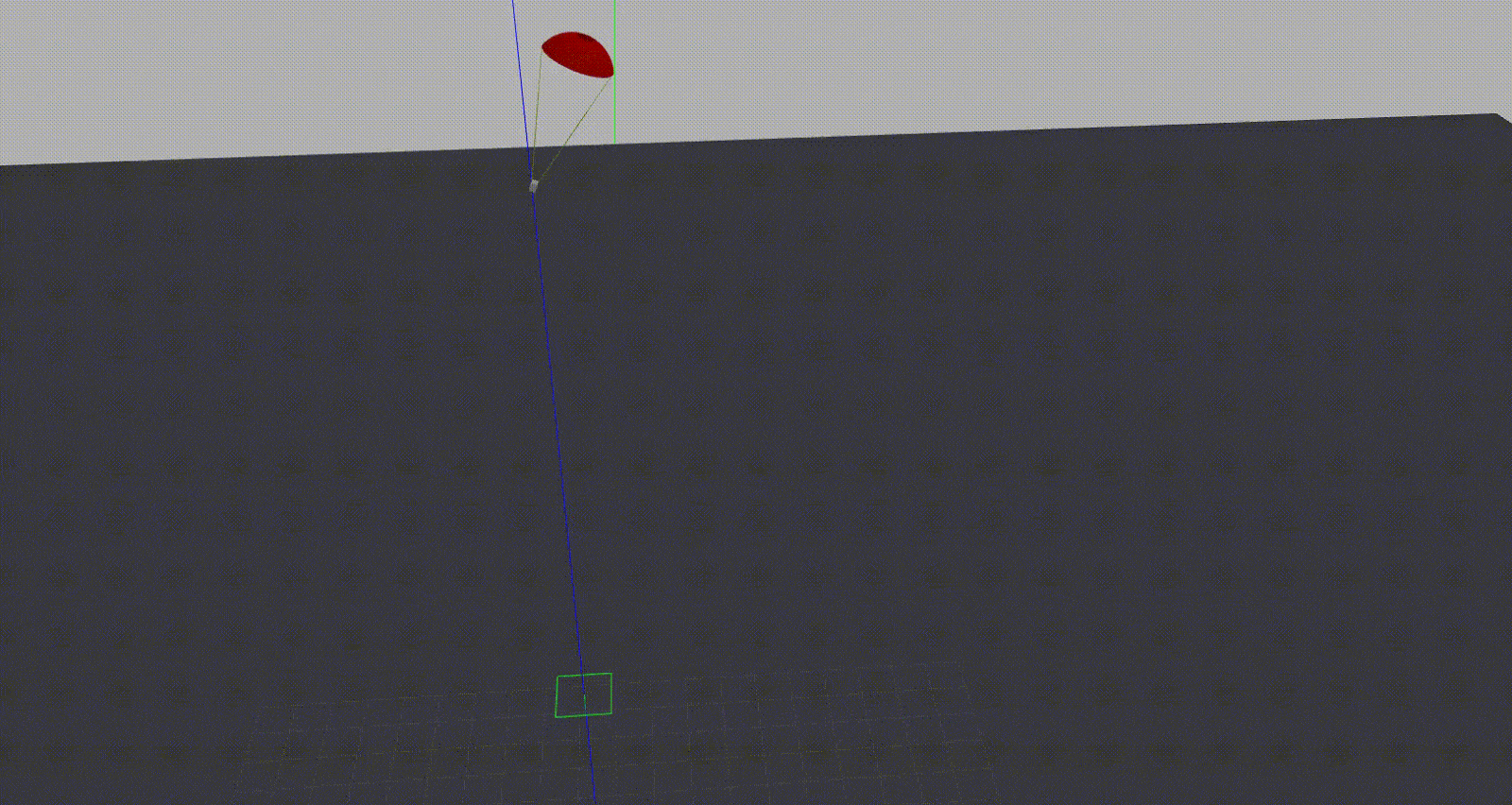
Going into the next quarter, the Embedded Team will continue testing the plane’s materials’ effect on the antenna performance and placement within the plane using more advanced simulations. This will be done through modeling the antennas in the software and testing the performance with and without the fuselage around it. Additionally, the team will test implementing the PID controller into the antenna tracker firmware for a smoother response, as well as testing out GPS configuration and data management for integration with GCS (ground control station). From here, they will also develop a link analysis program to analyze the connection between the plane and the GCS during its flight path. The team will also continue to develop and finalize the electronic load for testing the prototype of the current power board design or at least acquire one, and manufacture a through-hole prototype of the power board design alongside all the 3D designs for the casing and heatsink mounting bracket. Implementation of the thermocouple amplifier design on the PCB and signals board code integration will also be targeted in the Spring Quarter. The team will continue to document details and methods used during test flights and other important pieces of information about the electronic devices that they maintain. Finally, the Embedded Team plans to have a mock-up of the components list for the new power board and have both the temperature and coulomb counter integrated in the microcontroller for the signals board.
Software Team
The Software Team has begun efforts to completely rebuild the frontend of the GCS to improve the overall UI/UX and also updated the GCS Golang backend for the current specifics of the competition interoperability server. This update to the backend handles and stores plane telemetry and stores it in a database for convenient real time visualization of plane data.The team has improved the training data generation software to account for all ground target shapes and edge cases, and retrained our saliency network with the new training data. Furthermore, the team built a new classification network to handle character, shape, and orientation all in one neural network. The team has also updated the path planning system to support Dubins-RRT avoidance to further improve our overall flight platform.

The Software Team also made significant improvements and additions to the computer vision server, allowing our packaged computer vision models to be deployed into other programs as self-contained modules. This helped begin work on creating a connected processing pipeline, allowing the rest of the ground control station to upload images from the plane and then download the results to report back to the interop server. The team also worked on the image-to-world transform, which will allow the computer vision server to correlate points in an image from the plane to the actual GPS position in the world.
In the Spring Quarter, the Software Team plans complete updating the backend to integrate with the interoperability server, computer vision pipeline, and the path planning system. This includes finishing the frontend website for easier management of the progress of the mission and seeing the images coming in from the plane. The team also plans to benchmark our computer vision models with new training data and continue benchmarking the entire end-to-end computer vision pipeline. There are also plans to integrate the computer vision service with the ground control server for uploading necessary images to the judging server. The team also plans to accomplish tasks of completing the implementation of Dubins-RRT, applying a convolutional network for image segmentation, and using Docker to containerize all parts of the system and combine them easily and efficiently.
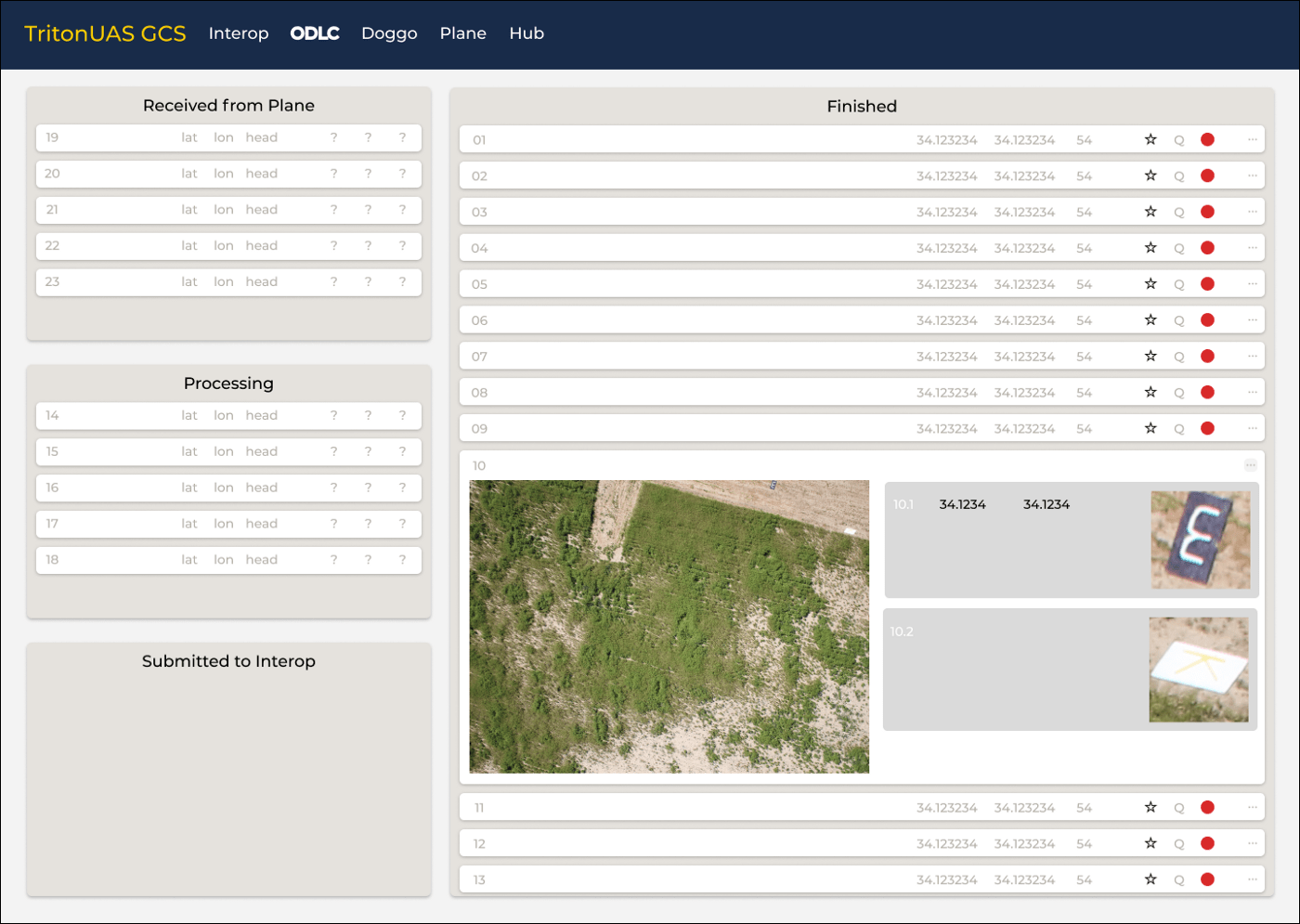
Business Team
The Business Team this season has made efforts to maintain clear communication with parties interested in Triton UAS and our sponsors during this time of remote operations. The Fall and Winter quarters have seen continued work on University requirements and applications, including the construction and adoption of our new EDI plan that pushes for improved Equity, Diversity, and Inclusion for our organization. This EDI plan will not only serve to create a more diversified and accessible environment for members, but will also contribute to making UCSD a more dynamic and modern university moving forward.
In collaboration with the other subteams of Triton UAS, the Business Team has also dedicated time to pushing forward Triton UAS’ new branding and logo. Our new logo will soon be featured on our new t-shirts and website, who we’re working closely with members of the Software Team to develop. The Business Team has also been working on new updated promotional materials that aim to provide those unfamiliar with our organization a quick and easy way to learn more about our goals.
Advancing from this, the Business Team will continue to dedicate itself to providing a consistent line of communication between our operations and our supporters. The team’s main focus will be to complete any outstanding promotional materials for the organization and complete any end-of-the-year University requirements to close out the season.
Thank you for your continued support and interest in Triton UAS. We look forward to getting to share more about what we’ve been up to again soon!